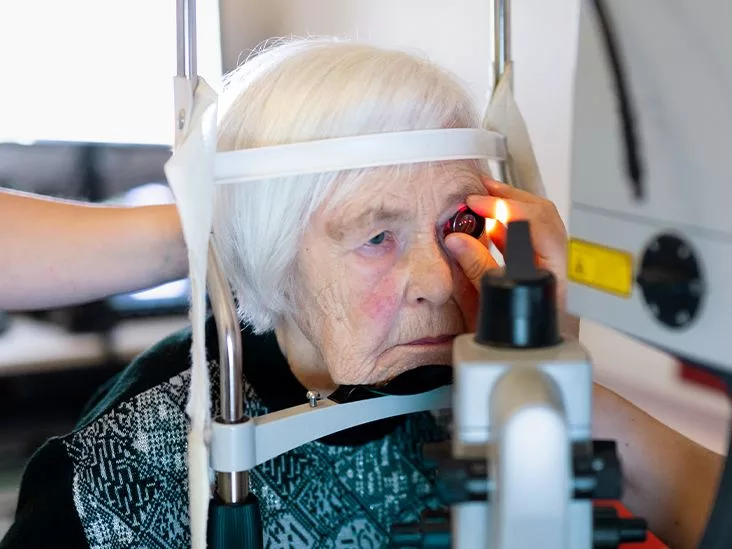Got a question about why your eyes might be getting a little foggy? You’re not alone. The short answer is that knowing the macular degeneration causes can help you cut down risk, spot problems early, and choose the right age related macular degeneration treatment before it steals your central vision.
Why Causes Matter
Link Between Causes & Risk
Every factor that nudges your macula toward trouble also nudges your macular degeneration risk higher. Think of it like a domino line—one push can set the whole chain in motion. That’s why we spend time untangling the underlying causes instead of just treating symptoms.
Impact on Treatment Choices
If you know whether genetics, smoking, or high blood pressure are the main culprits, you can tailor your macular degeneration treatment plan. For example, a diet rich in lutein and zeaxanthin may be enough for a low‑risk case, while someone with wet AMD might need anti‑VEGF injections.
Primary Drivers of AMD
Genetics & Family History
Do you ever wonder why your mom and dad both needed eye exams? Genetics play a starring role. Studies routinely point to genes like CFH and ARMS2 as the heavy‑hitters that predispose you to age‑related macular degeneration. Even if you can’t change your DNA, knowing the family history lets you stay ahead of the game.
Aging Process
The clock is relentless. As we age, the delicate cells of the macula thin out, and tiny waste piles called drusen start to settle in the back of the eye. The National Eye Institute explains that this “wear‑and‑tear” is the core of many macular degeneration causes.
Lifestyle & Environmental Exposures
Here’s where you have the most control. Cigarette smoke, excess weight, and a diet low in antioxidants each light a fuse that accelerates macular wear. Long‑term sun exposure without UV‑blocking glasses also adds insult to injury. A 2024 Mayo Clinic review flags smoking, obesity, and diet as the top three modifiable macular degeneration risk factors.
Systemic Health Conditions
High blood pressure, high cholesterol, and cardiovascular disease all share a common thread: they strain tiny blood vessels throughout the body—including those that feed the macula. When those vessels are sluggish, the retina gets less oxygen, and the macula suffers.
Sex & Ethnicity
Women tend to develop AMD a bit more often than men, not because of hormones but because they generally live longer. People with lighter irises and those of Caucasian descent also show higher rates, according to the NEI.
Lifestyle & Environmental Triggers
Smoking: The Silent Saboteur
If you’ve ever seen a cigarette labeled “causes blindness,” you knew it was serious. Smoking speeds oxidative damage in the retina, making drusen formation more likely. Quitting can drop your macular degeneration risk by up to 50% within a few years.
Nutrition: Food That Saves Vision
Think of your eyes as a high‑performance engine; they need premium fuel. The AREDS2 formula—vitamins C & E, zinc, copper, lutein, and zeaxanthin—has solid evidence for slowing the progression of early AMD. Whole foods like kale, spinach, and eggs are natural sources of these pigments.
UV & Blue‑Light Protection
Sunlight is great for a beach day but not for your macula. UV rays and high‑energy blue light can break down retinal cells over time. A good pair of polarized sunglasses with UV 400 protection is a cheap insurance policy you can’t afford to skip.
Weight Management & Exercise
Extra belly fat isn’t just a fashion issue; it’s a metabolic one. Being overweight raises inflammatory markers that accelerate retinal damage. Regular aerobic exercise helps keep blood pressure and cholesterol in check, which in turn protects the tiny vessels feeding the macula.
Dry vs Wet Types
Dry (Atrophic) AMD
The dry form accounts for about 85% of cases. It’s a slow‑burn process where drusen pile up and the macula gradually thins. Most people won’t notice symptoms until the later stages, but early detection through an Amsler grid can give you a head start.
Wet (Neovascular) AMD
Only 10‑15% of patients get the wet form, but it’s the one that can wreak havoc quickly. Abnormal blood vessels sprout under the retina, leak fluid, and cause sudden central vision loss. Anti‑VEGF injections are the gold‑standard treatment, often halting the bleeding and even improving sight.
How Dry Turns Wet
Not every dry case flips the switch, but risk factors like heavy smoking or high blood pressure increase the odds. When you spot a sudden distortion—straight lines look wavy—head straight to an eye doctor; it could be the early warning of wet AMD.
Other Forms & Look‑Alikes
Juvenile / Stargardt Disease
Stargardt’s is the “young‑adult” cousin of AMD. It’s caused by a recessive ABCA4 gene mutation and shows up in the teens or twenties. While it looks similar under an eye exam, its underlying cause is completely different, so the treatment strategy diverges.
Secondary Macular Degeneration
High myopia (severe nearsightedness) and diabetic retinopathy can masquerade as AMD on a slit‑lamp exam. Knowing the distinction matters because the management pathways vary widely.
Medication‑Induced Risks
Long‑term corticosteroid use and certain antipsychotics have been linked to accelerated macular wear. If you’re on any of these, ask your physician about regular retinal monitoring.
Personal Risk Checklist
| Risk Factor | Low | Moderate | High |
|---|---|---|---|
| Age (≥ 60) | X | ||
| Family History | X | ||
| Smoking | X | ||
| Obesity (BMI ≥ 30) | X | ||
| High Blood Pressure | X | ||
| UV Exposure (no sunglasses) | X |
Ask yourself these quick questions: Do you smoke? Do you wear UV‑blocking sunglasses regularly? Have you had an eye exam in the past year? If you ticked a few “high” boxes, it’s time to schedule a dilated eye exam and maybe start a conversation about lifestyle tweaks.
Prevention & Early Action
Quit Smoking Today
Quitlines, nicotine patches, or even a good buddy system can make a huge difference. Remember, the macula thanks you for every cigarette you don’t light.
Eat for Your Eyes
Load up on leafy greens, colorful peppers, and fish rich in omega‑3s. The antioxidant cocktail they provide helps neutralize free radicals that would otherwise gnaw at macular cells.
Shield Your Vision
Invest in a pair of sunglasses that block 100% UV and at least 30% of blue light. Even on cloudy days, those invisible rays are still at work.
Stay Physically Active
Walk, bike, or swim for at least 150 minutes a week. Regular cardio keeps blood flowing smoothly to every corner of your body—including the eye.
Routine Eye Check‑ups
Even if you feel fine, a yearly dilated exam can spot drusen or early retinal changes before they become visible to you. Early detection means early intervention, and that’s the best gift you can give your future self.
Treatment Overview
Dry AMD Management
The cornerstone is the AREDS2 supplement regimen. In addition, low‑vision aids—magnifiers, high‑contrast reading glasses, and smartphone apps—can stretch usable vision for many patients.
Wet AMD Therapies
Anti‑VEGF injections (e.g., ranibizumab, aflibercept) are injected directly into the eye, halting abnormal vessel growth. Photodynamic therapy—a light‑activated drug—remains an option for certain cases.
Emerging Options
Gene‑therapy trials and stem‑cell research are bubbling under the surface. While still experimental, they hold promise for a future where “no cure” becomes a thing of the past.
Key Takeaways
- Genetics set the stage, but lifestyle choices write the script.
- Smoking, poor diet, and uncontrolled health conditions are the most changeable macular degeneration causes.
- Understanding whether you’re facing dry or wet AMD guides treatment.
- Regular eye exams, UV protection, and a nutrient‑rich diet are your best defense.
- If you spot wavy lines or a dark spot, see an eye doctor right away—early action can preserve vision.
Knowing the “why” behind macular degeneration isn’t just academic; it’s a roadmap to protecting the windows through which you see the world. If any of the risk factors resonated with you, consider reaching out to an eye‑care professional this week. And hey, if you’ve already made a healthy change—like finally swapping your old sunglasses for a new pair—share that win in the comments. Your story could be the spark someone else needs to protect their sight.


















Leave a Reply
You must be logged in to post a comment.